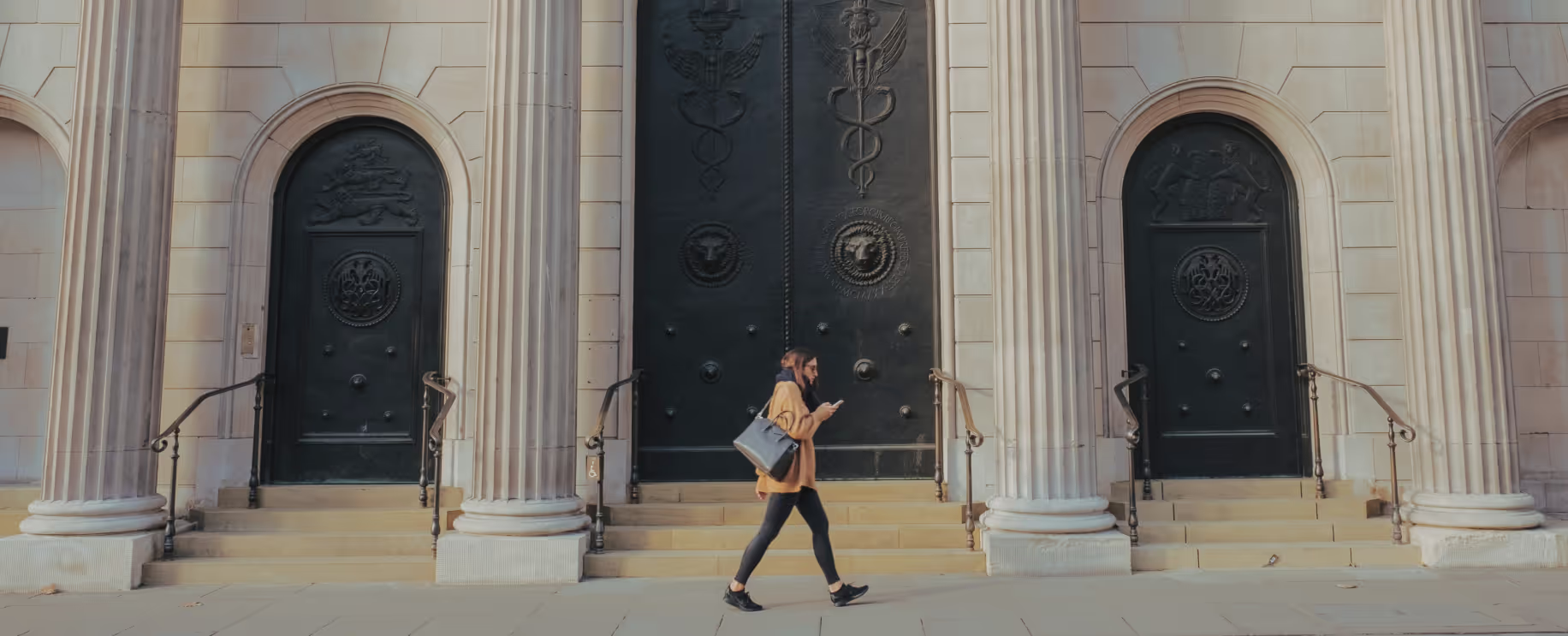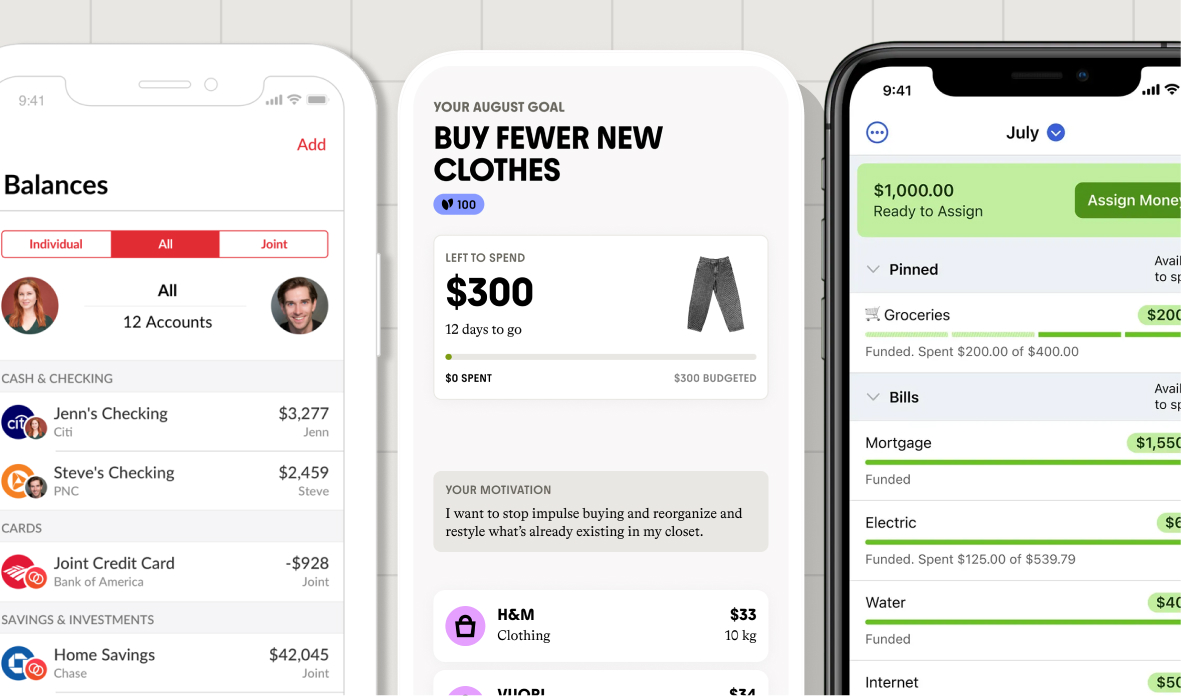Sustainable Banking Made Simple: How to Ditch Your Dirty Bank

Join the community





Megabanks, the world’s biggest national and international banks, are the world’s top fossil fuel financiers. In fact, they’ve funneled $4.6 trillion of new capital into the industry since the 2016 Paris Climate Agreement was signed.
In the United States, the largest banks and asset managers financed the equivalent of nearly two billion tons of carbon dioxide in 2020. If the U.S. financial sector was a country, it’d be the world’s fifth-largest emitter (behind China, the United States, India, and Russia).
Banking with a financial institution that doesn’t invest in fossil fuels is one of the most important climate choices you can make. And, you only have to do it once. This guide to sustainable banking unpacks how to investigate your bank and find a greener alternative by dinner time.
Step 1: Investigate Your Bank
Many major banks have made commitments to align their lending with net zero goals. But most still have a long way to go before their practices align with true climate stability.
To understand what your bank is really up to, look it up on Banking on Climate Chaos. This dynamic database reveals exactly how megabanks use your money. Use it to investigate your bank’s fossil fuel track record, climate policy ratings, and how it compares to other institutions.
The Dirty Dozen are the 12 banks that invest the most in fossil fuels. These 12 banks alone are behind over half of global fossil fuel funding by megabanks. Together, they invested $2.4 trillion between 2016 and 2021.
JPMorgan Chase, Citi, Bank of America, and Wells Fargo are the worst of the worst. These four banks alone account for over one-quarter of global fossil fuel financing in the past six years.

Step 2: Find a Better Financial Institution
If you dig up some less than flattering information about your current bank, know there are better place to take your money. You have two options:
- Ditch the Worst: Ditch the worst offenders (IE: The Dirty Dozen) and switch to any other institution.
- Switch to the Best: Take it a step further and switch to fossil fuel-free, sustainable banking.
Any step away from the worst offenders is a step in the right direction.
1. Ditch the Worst
Picking a better big bank may be an especially good option if you have multiple accounts, and one is with a Dirty Dozen bank. In this case, your best first step is to simply transfer all your funds to the cleaner bank(s) and close the Dirty Dozen account.
With regards to fossil fuels, a few less bad big banks are US Bank, PNC Bank, Capital One, Charles Schwab, Citizen Banks, and Ally Bank.
2. Switch to the Best
You can fully decarbonize your banking by switching to a fossil fuel-free bank. These sustainable banks don’t do business with companies engaging in fossil fuel extraction or infrastructure.
Over 30 U.S. banks have made fossil fuel-free pledges through Bank for Good. Here are a few of our favorite sustainable banking options:
- Amalgamated Bank: B-Corp certified. Climate safe investment portfolios. Powered by renewable energy. No monthly fees.
- Beneficial State Bank: CDFI, GABV, and B-Corp Certified. Non-profit owned. Responsible credit cards. No monthly fees (with e-statement)
- Atmos Bank: B-Corp certified. Invests deposits in clean energy. No monthly fees.
- Your local credit union: credit unions are usually too small to fund fossil fuel ventures, and instead invest in your local community.
What are the principles of sustainable banking?
Sustainable/ethical banks and credit unions fund people and the planet. The following markers indicate a genuine commitment to improving the financial industry:
- B-Corp Certified: Company meets the highest verified standards of social and environmental performance and public transparency
- Global Alliance for Banking on Values (GABV): Banks committed to making the financial sector more transparent and environmentally and socially responsible
- Community Development Financial Institution (CDFI): Banks focusing on financial empowerment in low-income and disenfranchised communities
Bank for Good and Mighty Deposits are two other great resources to help you find the most sustainable banks aligned with your values, and equipped with the services you need.
Pros and Cons: Small & Sustainable Banking
In general, sustainable banking institutions are much smaller than mega-banks. They often provide more personal, flexible customer service than larger institutions and can also make positive changes throughout their entire operations more quickly than the big banks.
Small banks have their downfalls, too. They’re often less integrated, meaning it’s less convenient to link and share account information with other companies. Many climate-forward banks are younger, too: Can you trust them? What happens to your money if they don’t make it?
If you’re hesitant to transfer your entire account balance to a smaller bank, try opening an account and transitioning a small amount of money first. Give them a chance to earn your enthusiasm.
Switching to an Ethical Credit Card
Even if you break up with your bank, you might still be linked to the Dirty Dozen through your credit card. Any account fees and interest payments you make on your credit cards go directly to the issuing bank. And if your card is issued by one of the worst offenders, those payments help fund fossil fuel expansion.
Your next step to sustainable banking is to cut up your Dirty Dozen cards and open an ethical credit card. Most credit unions and smaller, ethical banks offer credit cards, so check with your new institution to learn more about your options.
Not all credit card issuers require you to have a checking account to apply for a credit card. See this list of responsible credit cards by Green America to discover one that works for you.
Step Three: Break Up With Your Bank – Loudly!
Once you’ve found a new institution, it’s time to make the switch. Applying for a new account generally takes only minutes, but switching over your account activity can be a bit more time-consuming. Make sure to cover these bases:
- Direct Deposits: Provide your employer with your new routing number and transfer your paycheck direct deposits.
- Recurring Bills: Monitor your old account and transfer subscriptions, bills, credit card payments, and automatic withdrawals to your new account.
- Linked Accounts: Update payment information for apps like Venmo, Paypal, and anywhere you’ve saved your cards online.
- Remaining Funds: Call your old bank and let them know you’d like to close your account (and why!). Provide your new routing number and request they transfer your remaining funds.
Make Noise on Your Way Out
Megabanks aren’t acting quick enough to prevent climate catastrophe. Make it clear that’s why they’ve lost your business. When you close your account, use the sample language below to do four things:
- Email the customer service representative who is assisting you;
- Send a break-up email to the bank’s general email;
- Post about the break-up on social media and tag your old bank;
- Talk to your friends and family and encourage them to do the same (and be loud about it!)
Language you Can Use
Humanity has just decades to take meaningful action to reverse the climate crisis. Despite public pressure and empty promises to divest, major banks continue to be the world’s top financiers of fossil fuels.
Because [bank name] continues to fund the fossil fuel industry with its customers’ money, I have chosen to close my account and take my business elsewhere. To win back customers like me, [bank name] must:
- Publicly acknowledge major banks’ roles in financing the climate crisis;
- Prohibit the funding of any new fossil fuel projects;
- Commit to completely divesting from fossil fuels on a timeline aligned with Paris Agreement goals; and
- Make a transparent, measurable commitment to respecting human rights throughout the process.













